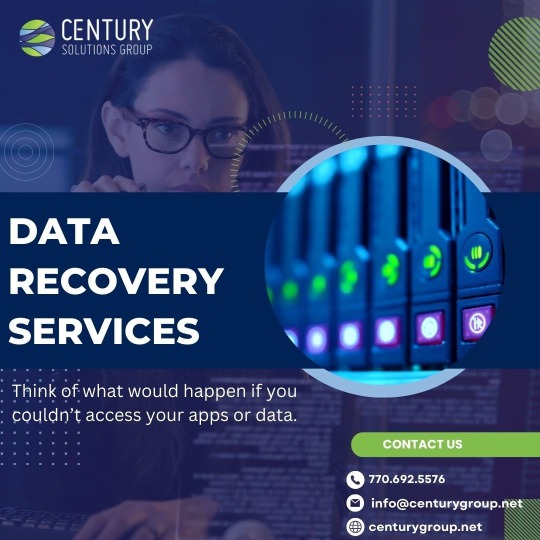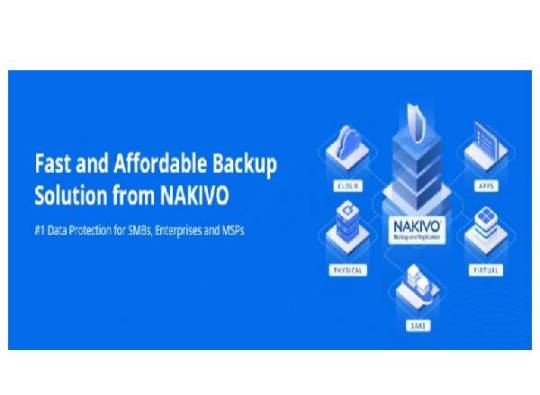#Data Backup Recovery
Explore tagged Tumblr posts
Text
Safeguarding Success: A Guide to Enterprise Data Backup and Recovery Services
In the dynamic world of business, where information reigns supreme, the security and integrity of data stand as crucial pillars for success. Imagine the chaos that could ensue if critical business data were to disappear unexpectedly. This is where the importance of enterprise data backup and recovery services becomes crystal clear.

Understanding the Importance of Data Backup and Recovery:
At its core, enterprise data backup and recovery involve safeguarding essential information and devising strategies to retrieve it in the event of loss. The aim is to ensure business continuity, preventing the potentially disastrous consequences of data loss. In an era where data is akin to gold, the cost of losing it can be staggering, affecting both finances and reputation.
Key Components of a Robust Backup and Recovery Strategy:
Regular Backups: Regular, automated backups are the backbone of any data protection strategy. By consistently preserving data, businesses can minimize the risk of information loss.
Data Encryption: To add an extra layer of security, data encryption plays a vital role. It ensures that even if data falls into the wrong hands, it remains unintelligible without the proper decryption keys.
Offsite Storage: Storing backups in geographically separate locations provides a safety net against disasters like floods or fires, ensuring data availability even in the face of physical damage.
Versioning and Retention Policies: Managing data efficiently involves implementing versioning and retention policies, allowing businesses to keep track of changes and control the lifespan of different data versions.
Types of Enterprise Data Backup and Recovery Services:
On-Premises Solutions: Traditional on-premises solutions offer control but come with the challenge of infrastructure maintenance and scalability concerns.
Cloud-Based Solutions: Cloud-based solutions, on the other hand, provide scalability, accessibility, and the flexibility to adapt to changing business needs.
Hybrid Solutions: The hybrid approach, blending on-premises and cloud elements, is gaining popularity, allowing businesses to enjoy the benefits of both worlds.
Best Practices for Implementing Data Backup and Recovery Services:
Risk Assessment: Begin by conducting a thorough risk assessment to tailor backup strategies to the specific needs of your business.
Testing and Validation: Regularly test and validate your backup and recovery processes to ensure they function as intended when the need arises.
Employee Training: Acknowledge the role of human error in data loss and invest in training employees to reduce the likelihood of such incidents.
Conclusion:
In conclusion, enterprise data backup and recovery services are not just technical necessities; they are the guardians of a business's lifeline—its data. By adopting comprehensive strategies, leveraging technological advancements, and learning from others' experiences, businesses can fortify themselves against the unpredictable tides of the digital landscape.
#data backup#data recovery#data recovery and backup#data backup and recovery services#data backup solution#data backup recovery
0 notes
Text
.
#other people had worse days than i did yesterday#but yesterday I managed to fry both backups of all my digital writing for my entire life#along with all the other file detritus I've collected since I was 15#but it's the loss of my writing that's doing me in#I had so many projects I wanted to come back to that I can't ever see again#I don't even remember half of them#I'm looking into data recovery for the damaged drives but. god. what if it doesn't work#what if it's all gone forever?#improving#anyway if anyone knows anything about data recovery for damaged drives hmu i guess
2 notes
·
View notes
Text
#Third-party App for Salesforce Data Backup#The Best Solution for Salesforce Data Backup#Salesforce Data Protection#Salesforce Data Backup and Recovery#Salesforce Data Backup#Salesforce backup solution
2 notes
·
View notes
Text
PS: you don't need a fancy SSD for backing up your stuff - a USB flash drive (or memory card - if your computer doesn't have a slot, you can get a cheap USB adapter) is almost as good and usually much cheaper, just be sure to store it safely (I stick mine in a fireproof documents safe). if you're paranoid about data loss like me, get a second one to repeat the process after 5-10 years. I just got a couple 256GB USB flash memory cards for, like, $30 each, and that'll store everything you've ever written plus most everything else
which you should do with an SSD, too, as eventually their storage matrix "wears out" (just not as quickly as HDD drives), especially if you use it frequently
HEY!
Back up your computer!
Go get the external drive you bought specifically for this purpose and then left in a drawer somewhere and RUN A FULL BACKUP.
There are lots of posts that make the rounds reminding us to sit up straight, stretch, drink water, refocus our eyes, take our meds, etc. But while this may not be about your health, it's still super-important.
Back up your whole-ass computer. If you can afford a second backup drive, buy one so that you have one SSD and one HDD, and back up to both of them (you can back up just the current important stuff to the SSD and let the HDD do the heavy-duty lifting).
Do not rely on 'the cloud' or the internet to keep jack shit.
AND BACK UP YOUR GMAIL AS WELL HOLY SHIT. The last thing you want is a catastrophic issue where literally every single thing you have in gmail is gone. It's happened. It happened to a friend of mine and basically her entire life was in there and now it's all gone. 20 years of it.
Reblog to save a life.
#writing tips#you do not own or control things stored in the cloud#don't trust corporations#backups#data backup and recovery
21K notes
·
View notes
Text
Storage Predictions for 2025: Larry O’Connor Explores the Future of Data Management
New Post has been published on https://thedigitalinsider.com/storage-predictions-for-2025-larry-oconnor-explores-the-future-of-data-management/
Storage Predictions for 2025: Larry O’Connor Explores the Future of Data Management


In this article by Larry O’Connor for LarryJordan.com, the founder and CEO of OWC shares his insightful predictions for the future of data storage in 2025. Highlighting the return to on-premises solutions, the democratization of AI through local implementation, and the growing performance gap between local and cloud-based systems, O’Connor provides a roadmap for businesses to optimize their storage strategies. These predictions focus on enhancing security, improving performance, and reducing costs—key considerations for data management in the digital era.
The Return of On-Premises Data Storage and Computing
O’Connor predicts a major resurgence in on-premises data storage and computing as organizations prioritize security, performance, and cost control. With cloud storage costs on the rise and vulnerabilities becoming more apparent, many businesses are turning to local solutions for critical data management. On-prem data storage offers faster access speeds, greater reliability, and enhanced protection against cyberattacks.
Smaller businesses, in particular, benefit from local storage since it is less attractive to cybercriminals compared to public cloud platforms. O’Connor emphasizes that the cloud should play a supporting role—serving as a tertiary backup or for external data sharing—while local solutions remain the primary strategy for data security. By reducing reliance on cloud storage, businesses can avoid bandwidth costs, accelerate data recovery, and maintain control over sensitive information.
On-Premises AI: Democratizing Technology and Protecting Intellectual Property
One of the most exciting predictions from O’Connor is the rise of on-premises AI. This shift enables smaller businesses to access powerful data processing tools without the high costs associated with cloud-based AI platforms. Running AI systems locally not only democratizes advanced technology but also protects proprietary data, algorithms, and customer insights from being exposed in the cloud.
O’Connor warns of the risks of “data bleed,” where proprietary information inadvertently enhances third-party systems or becomes accessible to competitors. On-prem AI ensures full control over sensitive data while eliminating recurring costs associated with cloud AI services. This makes on-premises AI a cost-effective and secure option for businesses looking to leverage AI capabilities.
The Expanding Performance Gap Between Local and Cloud-Based Systems
O’Connor’s third prediction underscores the growing performance gap between locally operated systems and cloud-dependent solutions. With advancements like Thunderbolt 5 technology, local systems now achieve data transfer speeds of up to 7000MB/s, far surpassing the 100MB/s typical of cloud-based systems.
This dramatic performance boost is essential for tasks such as video editing, high-resolution imagery processing, and managing complex data sets. By leveraging local systems, businesses can streamline workflows and significantly reduce the time and cost associated with cloud dependency. O’Connor suggests that cloud storage is best reserved for distribution and collaboration, while local solutions should handle performance-intensive tasks.
Conclusion: Embracing a Hybrid Storage Strategy
Larry O’Connor’s predictions for 2025 highlight a pivotal shift in data management strategies. Businesses are advised to embrace on-premises solutions for their speed, security, and cost advantages while using cloud services selectively for supplementary needs. Whether it’s safeguarding intellectual property, optimizing performance, or reducing expenses, on-premises storage and computing are poised to take center stage in the future of data management.
For organizations looking to stay ahead of the curve, O’Connor’s insights provide a clear path to success. By adopting a hybrid approach to data storage, businesses can harness the best of both local and cloud technologies, ensuring they remain competitive in an evolving digital landscape.
Read the full article by Larry O’Connor HERE
Learn more about OWC below:
#2025#ai#AI platforms#AI systems#Algorithms#approach#Article#backup#Best Of#CEO#Cloud#Cloud AI#cloud services#cloud storage#Collaboration#computing#Cyberattacks#cybercriminals#data#Data Management#data processing#data recovery#data security#data sharing#data storage#data transfer#democratization#democratization of AI#Editing#focus
0 notes
Text
Fusion Factor Corporation provides reliable IT solutions and support for small and medium-sized businesses. They specialize in managed IT services, cybersecurity, cloud solutions, and IT consulting, helping companies work smarter and stay secure.
With a focus on customer care, Fusion Factor ensures your technology runs smoothly, so you can focus on growing your business. Their team offers 24/7 monitoring, proactive support, and tailored solutions to meet your unique needs. Fusion Factor makes IT simple, so you can achieve more.
#cybersecurity#data recovery#it consulting#it services#it support#seo services#virtualization services#voip#managed it services#cyber security#cloud computing#Virtualization Services#Dark Web Monitoring Services#Office 365 Data Backup#IT Help Desk Services#Hardware As A Service#Office 365#Email & Spam Protection#On-Demand Services#Office Moves#Regulatory Compliance
0 notes
Text
Explore the essential benefits of cloud backup and restore solutions for business continuity. Learn how cloud technology safeguards data and enhances operational resilience.
#cloud backup benefits#data recovery solutions#business cloud restore#advantages of cloud storage#disaster recovery cloud services.
0 notes
Text
How to create Synology Snapshot Replication
Snapshot Replication delivers an expert solution for data backup and recovery, offering near-instant data protection with flexible scheduling. This package safeguards your business data in shared folders and virtual machines stored in LUNs, ensuring quick access and availability in the event of a disaster. In this article, we shall learn the steps on how to create Synology Snapshot Replication.…
#check Snapshot Replication Status#Create Replication Job#Data Protection and Recovery#Disaster Recovery#Enable Synology Retention Policy#Enable the replication schedule#Perform Snapshot Recovery#Security and Compliance#Set Record Access time to Never#storage#Storage management#Synology#Synology NAS#Synology NAS backup
0 notes
Text
How to Back Up Your Phone: A Simple Guide for All Users

Introduction : Losing your phone’s data can be devastating, whether it’s photos, contacts, or important documents. Yet, many users fail to back up their devices regularly. Imagine dropping your phone or having it malfunction, only to realize you’ve lost all your files because you didn’t back up your data. The stress and frustration of losing precious memories or work files can be overwhelming.
Backing up your phone is easier than you think. Follow these simple steps to ensure your data is always safe.
1. Use Cloud Storage
Explanation: Cloud services like Google Drive or iCloud automatically back up your photos, documents, and other files, ensuring they’re safe even if your phone is damaged or lost.
Why It Matters: Cloud backups provide a reliable and convenient way to secure your data, and you can access it from any device.
2. Manual Backups to Your Computer
Explanation: For extra security, manually back up your phone’s files to your computer or external hard drive.
Why It Matters: Having a local backup adds another layer of protection, especially if cloud storage isn’t an option.
Conclusion Don’t wait until it’s too late — back up your phone regularly to avoid data loss. For more tips on protecting your device, visit Phonebuzz in Gold Coast.
0 notes
Text
How to Create a Data Backup and Recovery Plan
Data disaster recovery is in place to get critical information and systems back up quickly following a serious event. It is the use of predefined strategies, tools, and processes to quickly restore data after a disaster without incurring significant downtime or losses.

Disaster Recovery and Data Backup
If we want to make a break from the inherent negativity around disaster recovery, then you can simplify it yes — in that data backup) is simply about copying your archived data and backing this up where as DR (Disaster Recovery) relates more at restoring these pieces of information post-catastrophic event. Working hand in hand, they help maintain the state of business and data during an unplanned scenario.
When Does the Disaster Recovery Plan Get Put into Motion?
An organization will deploy a Disaster Recovery Plan (DRP) the moment an event strikes causing disruption / disaster in key operation of business! This may potentially happen by natural disasters, cyber attackes or system failure and other emergencies. When the disruption is confirmed, and it is determined that systems need to be restored with critical data in order for operations to continue uninterrupted — then go! You must follow the standard steps that we defined in DRP to reduce downtime and smooth recovery. With swift, thoughtful action the business should be able to return normal operations with little effect on customers and stakeholders.
You May Also Like:
How to Create a Data Backup and Recovery Plan
1 note
·
View note
Text
Data Backup and Recovery Market size was valued at US$ 12.90 Bn. in 2023 and the total Data Backup and Recovery revenue is expected to grow by 10.3% from 2024 to 2030, reaching nearly US$ 25.63 Bn.
0 notes
Text
Data Backup and Recovery

According to the Small Business Administration, 40 to 60 percent of small businesses lack backup and recovery services, risking survival of a disaster. Ensure your business in Atlanta, GA is ready with our data restoration solutions and digital data rescue. Invest in information recovery and retrieval services to safeguard your assets. Trust our backup and recovery services for business continuity. Learn more: https://centurygroup.net/managed-it-solutions/data-backup/
#datarecovery #databackup #technology #datasecurity #computerrepair #backup #cloudstorage #cloudbackup #datastorage #dataprotection #itsupport #windows #cybersecurity #data #backupdata #techsupport #onlinestorage #datasafety #itservices #smallbusiness
1 note
·
View note
Text
NAKIVO Backup Solutions: Protecting Your Data with Radiant Info Solutions
Discover how NAKIVO Backup Solutions and Radiant Info Solutions ensure comprehensive data protection and recovery for businesses in India.

0 notes
Text
The Most Dangerous Data Blind Spots in Healthcare and How to Successfully Fix Them
New Post has been published on https://thedigitalinsider.com/the-most-dangerous-data-blind-spots-in-healthcare-and-how-to-successfully-fix-them/
The Most Dangerous Data Blind Spots in Healthcare and How to Successfully Fix Them


Data continues to be a significant sore spot for the healthcare industry, with increasing security breaches, cumbersome systems, and data redundancies undermining the quality of care delivered.
Adding to the pressure, the US Department of Health and Human Services (HSS) is set to introduce more stringent regulations around interoperability and handling of electronic health records (EHRs), with transparency a top priority.
However, it’s clear that technology has played a crucial role in streamlining and organizing information-sharing in the industry, which is a significant advantage when outstanding services heavily rely on speed and accuracy.
Healthcare organizations have been turning to emerging technologies to alleviate growing pressures, which could possibly save them $360 billion annually. In fact, 85% of companies are investing or planning to invest in AI to streamline operations and reduce delays in patient care. Technology is cited as a top strategic priority in healthcare for 56% of companies versus 34% in 2022, according to insights from Bain & Company and KLAS Research.
Yet there are a number of factors healthcare providers should be mindful of when looking to deploy advanced technology, especially considering that AI solutions are only as good as the information used to train them.
Let’s take a look at the biggest data pain points in healthcare and technology’s role in alleviating them.
Enormous Amounts of Data
It’s no secret that healthcare organizations have to deal with a massive amount of data, and it’s only growing in size: By next year, healthcare data is expected to hit 10 trillion gigabytes.
The sheer volume of data that needs to be stored is a driving force behind cloud storage popularity, although this isn’t a problem-free answer, especially when it comes to security and interoperability. That’s why 69% of healthcare organizations prefer localized cloud storage (i.e., private clouds on-premises).
However, this can easily become challenging to manage for a number of reasons. In particular, this huge amount of data has to be stored for years in order to be HHS-compliant.
AI is helping providers tackle this challenge by automating processes that are otherwise resource-exhaustive in terms of manpower and time. There are a plethora of solutions on the market designed to ease data management, whether that’s in the form of tracking patient data via machine learning integrations with big data analytics or utilizing generative AI to speed up diagnostics.
For AI to do its job well, organizations must ensure they’re keeping their digital ecosystems as interoperable as possible to minimize disruptions in data exchanges that have devastating repercussions for their patients’ well-being.
Moreover, it’s crucial that these solutions are scalable according to an organization’s fluctuating needs in terms of performance and processing capabilities. Upgrading and replacing solutions because they fail to scale is a time-consuming and expensive process that few healthcare providers can afford. That’s because it means further training, realigning processes, and ensuring interoperability hasn’t been compromised with the introduction of a new technology.
Data Redundancies
With all that data to manage and track, it’s no surprise that things slip through the cracks, and in an industry where lives are on the line, data redundancies are a worst-case scenario that only serves to undermine the quality of patient care. Shockingly, 24% of patient records are duplicates, and this challenge is worsened when consolidating information across multiple electronic medical records (EMR).
AI has a big role to play in handling data redundancies, helping companies streamline operations and minimize data errors. Automation solutions are especially useful in this context, speeding up data entry processes in Health Information Management Systems (HIMS), lowering the risk of human error in creating and maintaining more accurate EHRs, and slashing risks of duplicated or incorrect information.
However, these solutions aren’t always flawless, and organizations need to prioritize fault tolerance when integrating them into their systems. It’s vital to have certain measures in place so that when a component fails, the software can continue functioning properly.
Key mechanisms of fault tolerance include guaranteed delivery of data and information in instances of system failure, data backup and recovery, load balancing across multiple workflows, and redundancy management.
This essentially ensures that the wheels keep turning until a system administrator is available to manually address the problem and prevent disruptions from bringing the entire system to a screeching halt. Fault tolerance is a great feature to look out for when selecting a solution, so it can help narrow down the product search for healthcare organizations.
Additionally, it’s crucial for organizations to make sure they’ve got the right framework in place for redundancy and error occurrences. That’s where data modeling comes in as it helps organizations map out requirements and data processes to maximize success.
A word of caution though: building the best data models entails analyzing all the optional information derived from pre-existing data. That’s because this enables the accurate identification of a patient and delivers timely and relevant information about them for swift, insight-driven intervention. An added bonus of data modeling is that it’s easier to pinpoint APIs and curate these for automatically filtering and addressing redundancies like data duplications.
Fragmented and Siloed Data
We know there are a lot of moving parts in data management, but compound this with the high-paced nature of healthcare and it’s easily a recipe for disaster. Data silos are among the most dangerous blind spots in this industry, and in life-or-death situations where practitioners aren’t able to access a complete picture of a patient’s record, the consequences are beyond catastrophic.
While AI and technology are helping organizations manage and process data, integrating a bunch of APIs and new software isn’t always smooth sailing, particularly if it requires outsourcing help whenever a new change or update is made. Interoperability and usability are at the crux of maximizing technology’s role in healthcare data handling and should be prioritized by organizations.
Most platforms are developer-centric, involving high levels of coding with complex tools that are beyond most people’s skill sets. This limits the changes that can be made within a system and means that every time an organization wants to make an update, they have to outsource a trained developer.
That’s a significant headache for people operating in an industry that really can’t sacrifice more time and energy to needlessly complicated processes. Technology should facilitate instant action, not hinder it, which is why healthcare providers and organizations need to opt for solutions that can be rapidly and seamlessly integrated into their existing digital ecosystem.
What to Look for in a Solution
Opt for platforms that can be templatized so they can be imported and implemented easily without having to build and write complex code from scratch, like Enterprise Integration Platform as a Service (EiPaaS) solutions. Specifically, these services use drag-and-drop features that are user-friendly so that changes can be made without the need to code.
This means that because they’re so easy to use, they democratize access for continuous efficiency so team members from across departments can implement changes without fear of causing massive disruptions.
Another vital consideration is auditing, which helps providers ensure they’re maintaining accountability and consistently connecting the dots so data doesn’t go missing. Actions like tracking transactions, logging data transformations, documenting system interactions, monitoring security controls, measuring performance, and flagging failure points should be non-negotiable for tackling these data challenges.
In fact, audit trails serve to set organizations up for continuous success in data management. Not only do they strengthen the safety of a system to ensure better data handling, but they are also valuable for enhancing business logic so operations and process workflows are as airtight as possible.
Audit trails also empower teams to be as proactive and alert as possible and to keep abreast of data in terms of where it comes from, when it was logged, and where it is sent. This bolsters the bottom line of accountability in the entire processing stage to minimize the risk of errors in data handling as much as possible.
The best healthcare solutions are designed to cover all bases in data management, so no stone is left unturned. AI isn’t perfect, but keeping these risks and opportunities in mind will help providers make the most of it in the healthcare landscape.
#2022#ai#amp#Analytics#APIs#as a service#audit#automation#backup#backup and recovery#bases#Big Data#big data analytics#billion#Building#Business#challenge#change#Cloud#cloud storage#clouds#code#coding#Companies#continuous#data#data analytics#data backup#Data Management#data modeling
0 notes
Text
Don't Panic! Recovering Lost Data from Your iPhone
We've all been there. That sinking feeling when you realize you've accidentally deleted important photos, messages, or contacts from your iPhone. Maybe you lost them after an update, misplaced your phone, or simply hit the wrong button. Before you resign yourself to lost memories and information, there are ways to get your data back! This article explores different methods for iPhone data recovery, so you can potentially retrieve those precious files.
Understanding Data Loss: Why Does it Happen?
There are several reasons why data might disappear from your iPhone:
Accidental Deletion: A simple slip of the finger and important files are gone.
Software Updates: Sometimes, updates can cause glitches that lead to data loss.
Hardware Issues: If your phone experiences physical damage or malfunctions, data might become inaccessible.
Formatting or Resetting: Restoring your iPhone to factory settings wipes out all data.
Lost or Stolen Phone: If your phone is lost or stolen, you'll need to recover data from a backup, if you have one.
The Importance of Backups: Your Digital Safety Net
The best way to ensure you can recover lost data is by having a regular backup routine. iPhones offer two main backup options:
iCloud Backup: This cloud-based storage automatically backs up your phone to Apple's servers.
iTunes Backup: You can connect your iPhone to a computer and back it up using iTunes software.
Restoring from a Backup: A Straightforward Solution
If you have a recent backup, restoring your iPhone is the easiest way to recover lost data. Here's how:
Connect your iPhone to your computer or Wi-Fi.
Open iTunes or go to the Settings app on your iPhone.
Follow the on-screen instructions to choose the relevant backup and restore your device.
iPhone Data Recovery Software: When Backups Fail
Even if you don't have a backup, there are still options! iPhone data recovery software can scan your phone's internal storage for lost files. These programs work by searching for traces of data that haven't been permanently overwritten.
Here's what to keep in mind when using data recovery software:
Success Rates Vary: There's no guarantee you'll recover everything, especially if the data has been overwritten.
Free vs. Paid Options: Free versions might have limitations, while paid software offers more features and higher success rates.
Research is Key: Read reviews and compare features before choosing a data recovery software program.
Here are some resources to get you started with iPhone data recovery software: You can explore options through a web search or consider a reputable service like iPhone data recovery.
Taking Precautions: Preventing Future Data Loss
Here are some tips to minimize the risk of losing data in the future:
Enable Automatic Backups: Set your iPhone to back up automatically to iCloud or iTunes.
Store Important Files Elsewhere: Consider saving important documents, photos, and contacts to a cloud storage service or your computer.
Think Before You Delete: Double-check before deleting files, especially photos, messages, and contacts.
Update Regularly: Keep your iPhone software up to date to avoid glitches that might cause data loss.
Conclusion: Don't Lose Hope!
Losing data from your iPhone can be stressful, but it doesn't have to be the end of the world. You can potentially retrieve those lost files by understanding the different methods for iPhone data recovery. Remember, prevention is key, so make regular backups a habit to keep your precious data safe.
#iPhone data recovery#lost iPhone data#recover deleted photos iPhone#iPhone data backup#data recovery software
0 notes
Text
Learn effective Salesforce backup strategies to protect your business data and ensure seamless recovery in case of data loss.
#Salesforce backup#data recovery guide#Salesforce strategies#secure business data#Salesforce data protection
0 notes